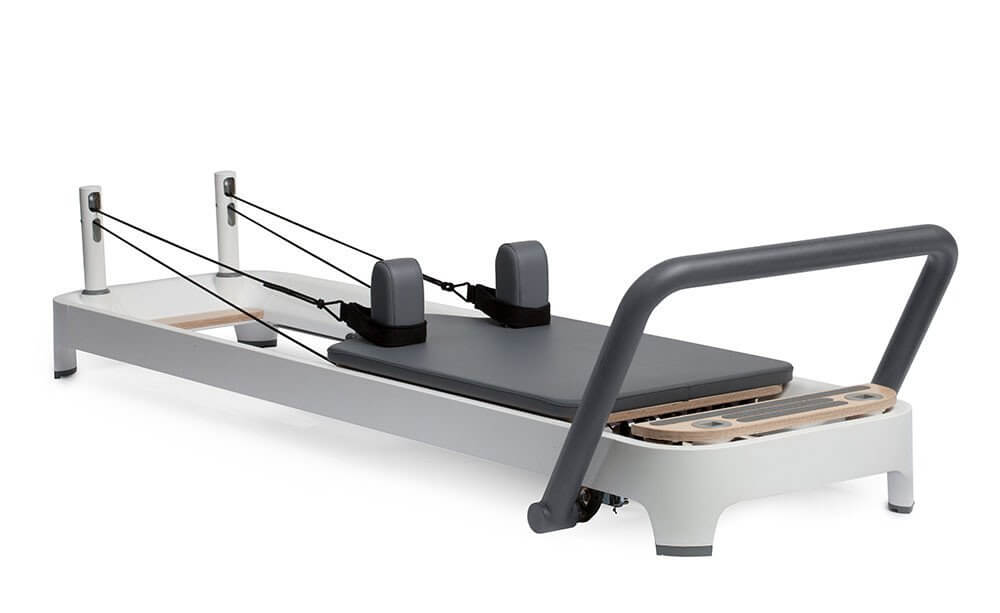
One of the most popular trends in physical health in the 21st century is Pilates named after Joseph Pilates who invented a series of regimented exercises less than 100 years ago. While Pilates generally looks rather simplistic and relies on the body’s own weight and limitations, the precision and control of the movements can have lasting benefits, including when combined with physical therapy.
As scientific journals have begun to publish articles About Pilates-Based Physical Therapy, the practice of combining the precise movements of Pilates to accomplish a specific physical therapy outcome have increased. Whereas standard Pilates is geared towards participants who are generally healthy, Pilates-Based Physical Therapy (PBPT) is focused on helping individuals heal from injuries. Additional benefits of Pilates-Based Physical Therapy include to ability to apply healing techniques holistically instead of focusing purely on the injury or source of discomfort. Pilates-Based Physical Therapy also helps correct and heal issues with posture, gait and/or movement patterns that may be hindering the healing process or causing pain and discomfort.
Because the medical profession is only just now starting to learn more About Pilates-Based Physical Therapy, insurance coverage for Pilates-Based Physical Therapy may be inadequate or non-existence. Before beginning any course of Pilates-Based Physical Therapy, it is essential to verify that adequate coverage or financing exists.
One of the reasons that Pilates-Based Physical Therapy has become increasingly popular in recent years is that this unique form of holistic treatment allows the patient to take a very active role in his/her healing. There is a built-in learning curve, particularly for individuals who have never participated in Pilates before, but the skills acquired in learning new ways of positioning the body, moving in prescribed manners, and being aware of feedback from the body will have long-lasting benefits far beyond the initial goal of healing from an injury.
Benefits of Pilates-Based Physical Therapy also include streamlining the physical therapy process to maximize the effort put into completing the movements and a noticeable reduction in the amount of time required to successfully achieve healing. By learning to become attuned to the body’s needs and limitations, there is a greater chance that future injuries can be prevented.
Pilates-Based Physical Therapy can be used to treat a wide range of disorders, syndromes and issues, including but not limited to:
Since its original conception approximately a century ago, Pilates equipment has become more streamlined and efficient in order to more precisely guide the movements of the prescribed exercises. Pilates equipment functions by using tension at key points of the body both to provide tactile feedback as well as to provide kinetic signals that guide correct orientation and postural positioning.

Allegro 2 Reformer
Once trained on how to properly use Pilates equipment, patients benefiting from a quality Pilates-Based Physical Therapy program will begin with certain movements sequences that start with little or no weight-bearing activities and then steadily progress to activities that receive the full weight of the individual. Many of these Pilates-Based Physical Therapy exercises begin with the patient lying down in a horizontal manner and then slowly increasing the angle of inclination in a controlled manner once the corresponding muscles and joints have grown strong enough to bear more weight.
While no list of Pilates equipment is ever exhaustive, some of the most commonly-used pieces of equipment used for Pilates-Based Physical Therapy purposes include:
Certainly, all forms of physical therapy are designed around the concept that the correct use of a guided series of physical motions will help a patient experience less pain, improve muscle strength and coordination, and help the body speed up the healing process. What makes Pilates-Based Physical Therapy different is that it combines the classical techniques of carefully-coordinated motion in standard Pilates and the various modalities of conventional physical therapy.
Here are just a few of the differences of Pilates-Based Physical Therapy versus standard physical therapy techniques:
Originally called “Contrology” by its creator, Joseph Pilates, the exercise system known today simply as Pilates differs from other forms of exercise or physical therapy due to its focus on precision movement, position, and breathing. Although it is not cardio in nature and rarely involves quick, energetic movements, the demands of Pilates are quite intense.
As a form of exercise that emphasizes a strong connection between the mind and body, Pilates is in some ways similar to yoga. Pilates, however, does not emphasize a spiritual connection and is designed primarily to improve both flexibility (range of motion) as well as building up strength in the body’s “core”, the central abdomen, legs, and arm part of the body that are critical for healthy balance, joints, and movement.
Pilates begins by learning the motions and then slowly performing them with an emphasis over correct movement instead of speed or exertion. As strength levels and mastery of the movements begins to increase, speed can likewise be increased although the primary focus of all Pilates exercises is to tone muscle groups and improve conscious awareness of biofeedback rather than burning calories or achieving specific targets (e.g. weight loss).
Be sure to discuss all of your health conditions with your chiropractor before beginning any course of therapy to ensure that exercises can be tailored to your specific needs and requirements.
Dr. Lev Kalika is a world-recognized expert in musculoskeletal medicine. with 20+ years of clinical experience in diagnostic musculoskeletal ultrasonography, rehabilitative sports medicine and conservative orthopedics. In addition to operating his clinical practice in Manhattan, he regularly publishes peer-reviewed research on ultrasound-guided therapies and procedures. He serves as a peer reviewer for Springer Nature.
Dr. Kalika is an esteemed member of multiple professional organizations, including: